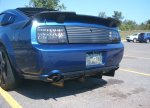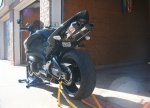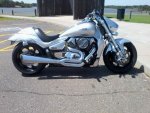- Joined
- Feb 28, 2001
- Messages
- 8,024
- Reaction score
- 4,356
- Points
- 113
- Location
- Dayton Oregon
- Vehicle Year
- 1990, 1997
- Make / Model
- Ford
- Engine Type
- 2.3 (4 Cylinder)
- Engine Size
- 2.3 Turbo
- Transmission
- Manual
- 2WD / 4WD
- 4WD
- Total Lift
- 6
- Tire Size
- 35"
But dual on a V6 will still sound like a V6, a crossover like an H or X pipe would help...
I didn't read through all of the long posts, but to note on the two cats inline, they have different mesh size, the first is likely more coarse than the second, one more to burn off excess hydrocarbons and heat the mix before the second trying to convert the CO and NOx into CO2 and other inert stuff...
I didn't read through all of the long posts, but to note on the two cats inline, they have different mesh size, the first is likely more coarse than the second, one more to burn off excess hydrocarbons and heat the mix before the second trying to convert the CO and NOx into CO2 and other inert stuff...

















